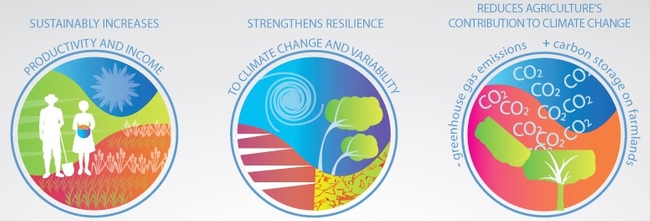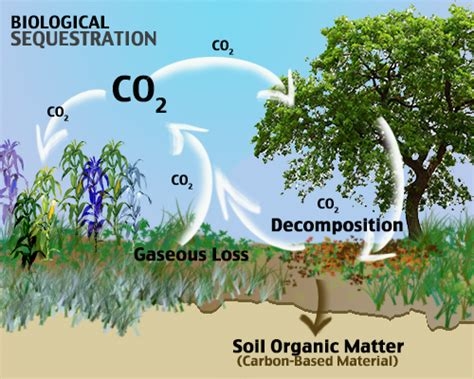Hello!
My name is Alli Rowe, Ventura County UC Cooperative Extension's Community Education Specialist working to promote and expand the adoption of science-based climate smart farming and ranching practices. I bring a background in biology, research experience on working lands and climate change, and enthusiasm for supporting food systems. Plus, I really like to talk about soil carbon. Like a lot.
Now, what exactly is climate smart agriculture? The Food and Agriculture Organization of the United Nations coined the term climate smart agriculture as “an approach that helps to guide actions needed to transform and reorient agricultural systems to effectively support development and ensure food security in a changing climate”. In short, climate smart agriculture addresses how to manage agricultural systems to meet the nutritional needs of a growing population while both building resiliency to climate change and using agriculture as a solution to our climate crisis.
To be effective, climate smart agriculture must meet three main objectives:
1) Increase agricultural productivity and incomes;
2) Adapt to and build resiliency to climate change; and
3) Reduce greenhouse gas emissions
Climate smart agriculture addresses the risks that agricultural production faces under a changing climate, underscores agriculture's role in solving climate change, and focuses on the importance of intensification of agriculture required to feed a global population.
California's agricultural industry is at extreme risk to the impacts of climate change. Changes in temperatures, precipitation patterns, extreme weather events, and water availability all pose a threat to the viability of agricultural production. Warming temperatures throughout the state will result in a decline of winter chill hours, increased water demand by crops, and the promotion of various pests. Projections show an increased tendency of heat wave events and an increase in duration and intensity of drought. In addition, California expects to see earlier snowmelt, resulting in increased flooding and a decrease in year-round water availability. This is a doom and gloom scenario we look towards unless we decide to act today to plan for tomorrow.
Agriculture and working lands play a significant role in climate change. According to the EPA's recent inventory, agricultural management practices contribute 8.4% of the United States' greenhouse gas (GHG) emissions. Interestingly, and encouragingly, agriculture can also act as a greenhouse gas sink by removing atmospheric carbon and storing it in plant tissue and soils. Through effective management, agriculture provides a significant solution to climate change.
This means agriculture can build resiliency to the impacts of climate change while acting as a solution to climate change. Carbon sequestration (long-term storage) in our soils is a low-tech solution that has been around since plants started photosynthesizing. Climate smart agriculture management practices focus on building soil health, increasing carbon storage in woody plants and soil, improving water use efficiency, and reducing greenhouse gas emissions associated with agricultural practices.
While climate smart agriculture practices are important to building resiliency and addressing climate change, they also tackle the essential questions of agricultural productivity. In order to feed a growing global population, existing agricultural production must be intensified. This means getting the maximum yields out of land already under cultivation so we don't go tearing out more carbon-rich forests to expand mediocre agricultural lands. Increasing soil health and hyper-efficiently managing water improves yields and reduces the cost of inputs such as fertilizer and water. Farming for a climate-smart future means farming to feed the world and keeping farmers farming.
My work centers around identifying management practices that boost agricultural productivity, save money on synthetic inputs and expensive water, build resilience to a changing climate and combat the increasing carbon emissions in our atmosphere. I look forward to sharing what farmers and ranchers are doing in Ventura County and beyond in future blog posts!
Climate smart agriculture encompasses management practices that increase soil carbon sequestration, reduce greenhouse gas emissions, improve yields and efficiencies, and promotes climate resilience. The California Department of Food and Agriculture (CDFA) supports three funding opportunities in climate smart agriculture: the Healthy Soils Program, the State Water Efficiency & Enhancement Program, and the Alternative Manure Management Program.
In a collaborative partnership, CDFA and UC Agriculture and Natural Resources have teamed up to support 10 community education specialists throughout the state to provide technical assistance and outreach for the climate smart agriculture programs. As one of these technical assistance providers, my role is to promote and support the adoption of these programs in Ventura County. If you are interested in working with me, please contact me at amrowe@ucanr.edu.


